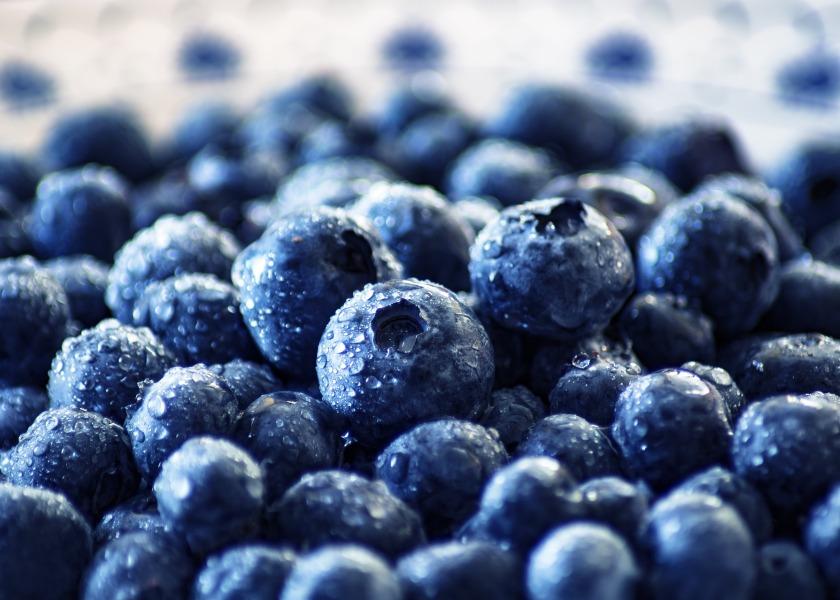Chilean blueberry production predicted stable, but fresh exports may be down

With fresh production expectations similar to a year ago, Chilean blueberry production has begun in the northern regions and will progress through the south as the season advances, says Andres Armstrong, executive director of the Chilean Blueberry Committee.
Peak production comes from the central and south-central regions, Armstrong said. Chilean blueberries normally begin peak volume arrival by the last week of the year or the first week of the coming year, Armstrong said. Peak timing should follow that timetable this year, he said.
“We anticipate an early conclusion compared to previous seasons, by the third or fourth week of February,” he said.
Production expectations
Chilean blueberry growers expect to be on the same level of production of the previous season, at around 375 million pounds, Armstrong said. This season should feature a different variety mix and lower volume of fresh exports, he said.
“Fruit that doesn’t have the appropriate shelf life, and varieties that are not in demand, will find a place in the frozen industry,” he said.
Armstrong said the Chilean Blueberry Committee members and fruit exporters are committed to quality and not focused on volume growth.
“Our goal is to supply a renovated variety mix to our different markets,” he said.
The main market for Chilean fresh blueberries is the U.S., with more than 53% of the shipments last season. Other key markets include Europe (34%), Asia (11%) and the remaining 2% within the Middle East and Latin America.
Armstrong said there has been an effort from the Chilean Blueberry Committee and its members, together with ProChile, to develop blueberry consumption around the globe, including the U.S.
“There is a strong focus on organics in the Chilean blueberry industry,” he said. “We estimate that 20% of blueberry production in Chile has organic certification.”
A strong effort has been made to grow organic blueberries in the country. Even so, Armstrong said market conditions last season resulted in more organic blueberry fruit being used in the frozen market, reducing Chilean fresh blueberry organic exports by 24%. Conventional fresh exports decreased by 6%, he said.
“The U.S. continues to be our main market for fresh organic blueberries, with 75% of all organic blueberries shipped to the U.S., followed by Europe with 24% and the remaining 1% to Canada,” Armstrong said.
Global growth
Armstrong said all global markets show consumption growth around the world, but those with higher rates of increase are in Europe.
“Asia is still growing, but COVID-19, particularly in China, has made Chilean exporters more conservative when sending fruit to that market,” he said. “There is potential growth in Asia for Chilean blueberries as well as for U.S. growers.”
Transportation
Logistical difficulties last season were the single most important barrier for Chilean blueberry exports, Armstrong said, but conditions should improve for the coming season.
“We do not expect to go back to pre-COVID conditions, but significant improvements should be seen in the coming season,” he said.
“This is especially true in the U.S. market where the Blueberry Express service will be in place from week 49 onward to bring fresh blueberries from Chile to the East Coast in steady timing,” he added.
Representing more than 97% of volume, nearly all Chilean blueberries are shipped by ocean containers, Armstrong said.







